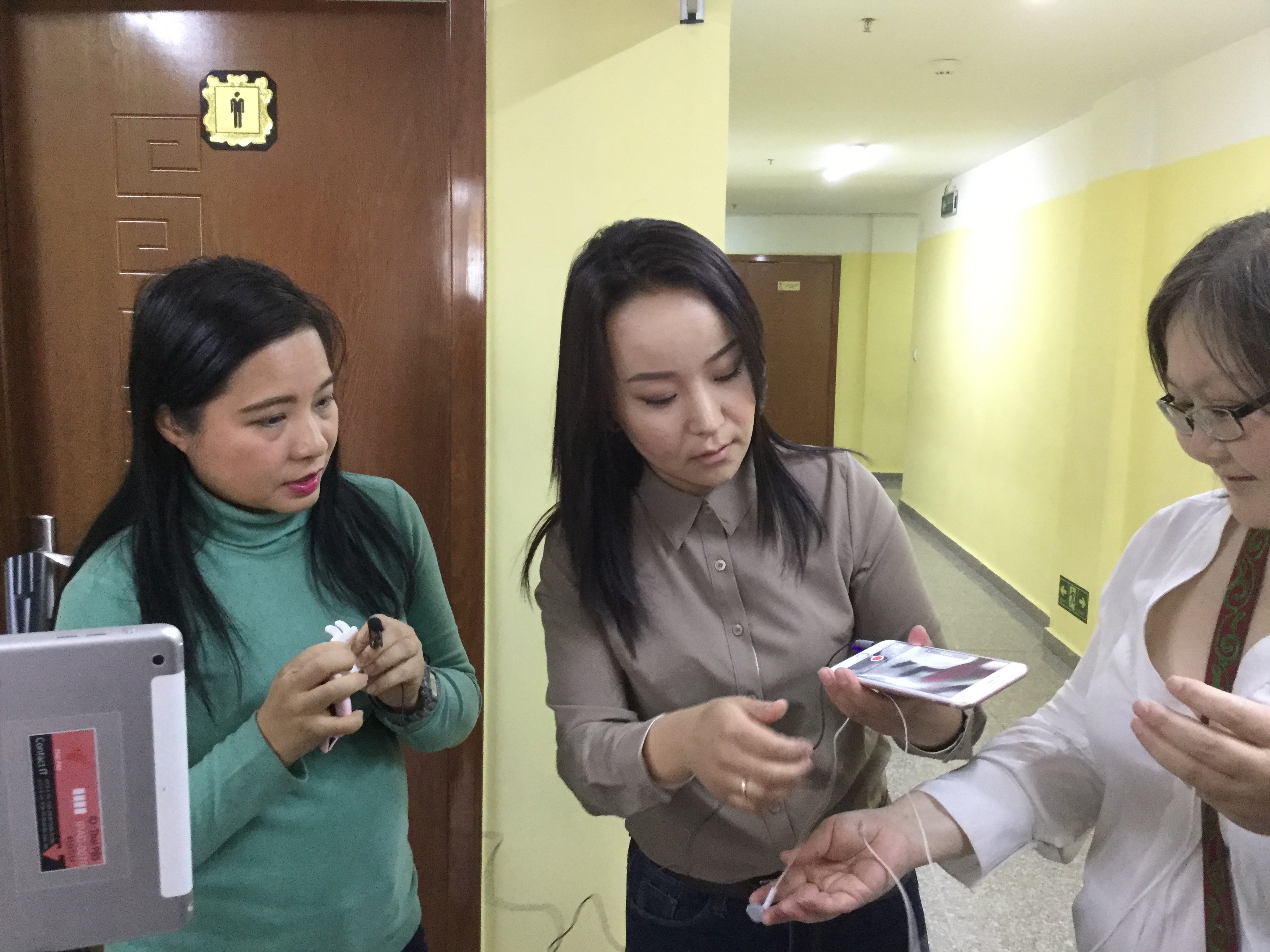Mongolian journalists reporting on disaster mitigation and preparedness (RedMap) to save lives

By Vidya Rana
At the Civilian Training Center in Mongolia’s capital, Ulaanbaatar, 40 Mongolian journalists listened intently to Thai Public Broadcast Services (ThaiPBS) disaster and weather reporting news editor, Ms. Darin Klong Ugkara, as she narrated her journey to becoming a journalist who reports to save lives.
She encouraged journalists to think beyond their careers and report for the greater goal of saving lives. She urged media colleagues to play their critical role in making communities resilient to climate change. “Timely and accurate information about hazards can help people adapt to the perilous conditions or take appropriate measure before a disaster strikes,” she informed.
Ms. Klong Ugkara was addressing televisions, newspapers, online and radio journalists at a two-day media training workshop on disaster risk reduction held in Ulaanbaatar, a day before the ISDR-Asia Partnership (IAP) Forum on 24-25 April.
The IAP meeting oversaw 125 delegates in attendance, represented by over 20 governments, intergovernmental organizations, UN entities, businesses and stakeholder groups. The delegates reviewed progress on the Asia Regional Plan for implementation of the Sendai Framework and discussed the agenda for the Asian Ministerial Conference on Disaster Risk Reduction (AMCDRR) to be held on 3-5 July 2018 in Mongolia.
The media workshop, organized by Asian Disaster Preparedness Center (ADPC), in collaboration with the United Nations Office for Disaster Risk Reduction (UNISDR), the National Emergency Management Agency (NEMA) of Mongolia and the Thai PBS is part of the initiative to build the capacity of journalists in reporting on disaster mitigation and preparedness (RedMap) to save lives.
Journalists from different platforms were introduced to the concept of a One Man Journalist (OMJ). Through group work, they learnt how to use simple devices, from mobile phones to tablets, to produce high-quality packages to be aired by their television channels or run on social media
The workshop venue−Civilian Training Center−proved to be the ultimate laboratory for participants to make fresh footage for their packages. They had the chance to film regular firefighting, search & rescue and earthquake preparedness drills being carried out at the training center by the Mongolian first respondents’ cadre.
Each group produced a three-minute package; the outstanding video was screened at the IAP meeting. In addition, workshop participants tested their newly learnt skills by covering the IAP meeting with an enhanced understanding of the subject and the role that media can play in disaster risk reduction.
Video packages produced by journalists are available on Mongolia Journalist Disaster Network.
One of the objectives of the workshop was to prepare local journalists to cover the AMCDRR. “AMCDRR is a crucial mechanism to reduce the risk of disasters in the Asian region. This workshop provided local journalists an opportunity to learn new skills and techniques to reporting on AMCDRR and disasters in the region,” said Brigadier General, Badral Tuvshin, Chief of NEMA, during his opening remarks.